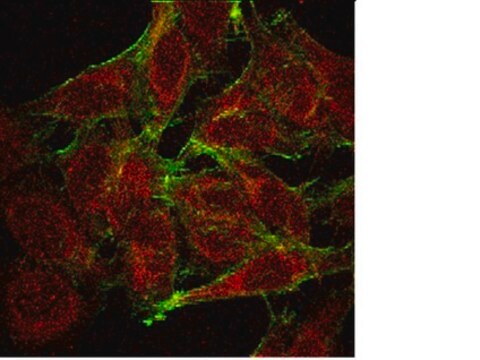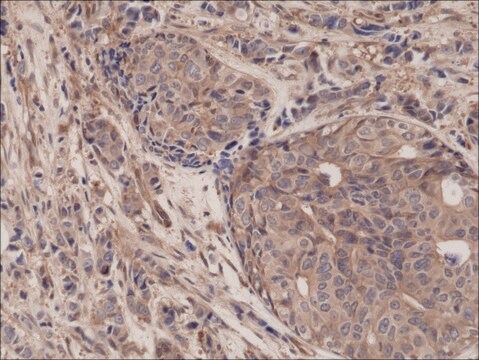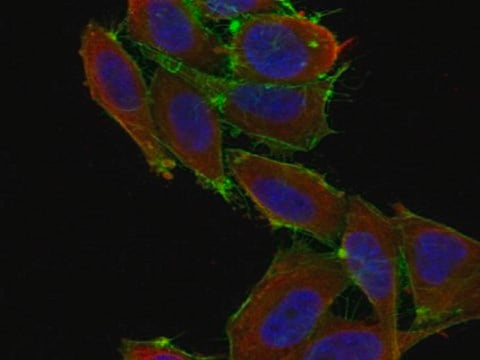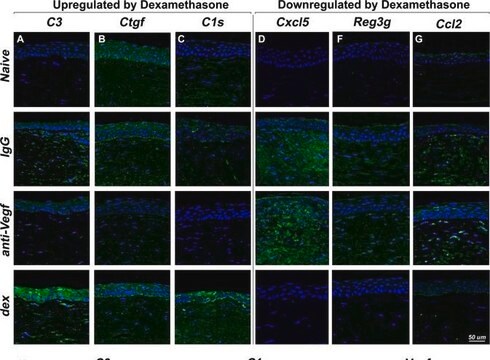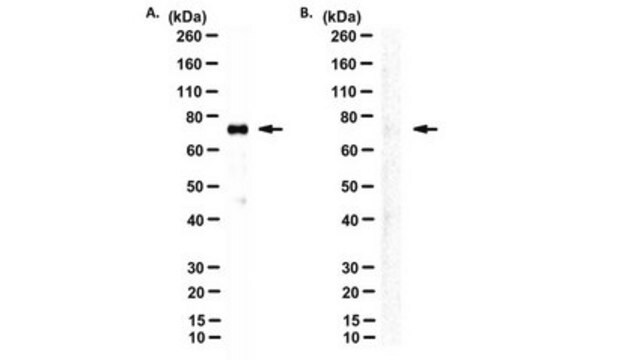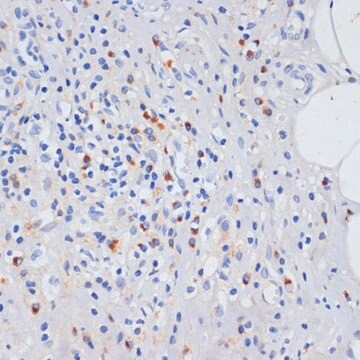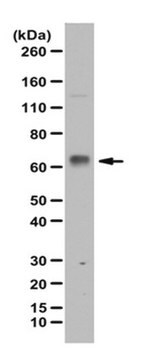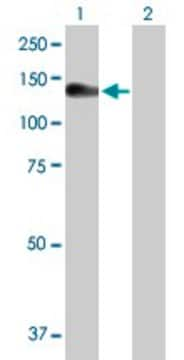MAB3026
Anti-NFκB Antibody, p65 subunit, active subunit, clone 12H11
clone 12H11, Chemicon®, from mouse
Sinónimos:
Rel A
About This Item
Productos recomendados
origen biológico
mouse
Nivel de calidad
forma del anticuerpo
purified immunoglobulin
tipo de anticuerpo
primary antibodies
clon
12H11, monoclonal
reactividad de especies
human, rabbit, rat
reactividad de especies (predicha por homología)
mouse
envase
antibody small pack of 25 μg
fabricante / nombre comercial
Chemicon®
técnicas
electrophoretic mobility shift assay: suitable
flow cytometry: suitable
immunocytochemistry: suitable
immunofluorescence: suitable
immunohistochemistry (formalin-fixed, paraffin-embedded sections): suitable
western blot: suitable
isotipo
IgG3
Nº de acceso NCBI
Nº de acceso UniProt
Condiciones de envío
ambient
temp. de almacenamiento
2-8°C
modificación del objetivo postraduccional
unmodified
Información sobre el gen
human ... NFKB1(4790)
Descripción general
Especificidad
Inmunógeno
Aplicación
A 1-10 μg/mL concentration of a previous lot was used in immunofluorescence.
Immunohistochemistry (paraffin sections):
A 5-10 μg/mL (APAAP) concentration of a previous lot was used in immunohistochemistry.
Immunohistochemistry (frozen sections):
A 5-10 μg/mL (APAAP) concentration of a previous lot was used in immunohistochemistry.
Immunohistochemistry:
The clone 12H11 works best in fresh frozen or acetone fixed human tissues, however some groups have had reactivity in traditional formalin fixed tissue when the tissue is of human origin. It is recommended that ABC or enhanced detection systems be employed for the best visualization in either acetone or formalin fixed tissues. The antibody reacts with human tissues best. Rat tissue will also react but at a lower affinity, and the antibody does not react with mouse, other species have not been examined. Microwave citric acid buffer or trypsin digestion antigen recovery have both been successful with 12H11 on formalin fixed tissues.
Western blot: 5-10 µg/mL (ECL)
Electrophoretic Mobility Supershift Assay:
A 0.5-1 μg/mL concentration of a previous lot was used in Supershift assay.
Flow cytometry:
A previous lot of this antibody was used in flow cytometry. Fixed cells only, acetone fixed cells.
Optimal working dilutions must be determined by end user.
Epigenetics & Nuclear Function
Transcription Factors
Calidad
Western blot:
1:500 dilution of this lot detected NF KAPPA B, P65 on 10 μg of PC12 lysates.
Descripción de destino
Forma física
Almacenamiento y estabilidad
Aliquot to avoid repeated freezing and thawing. For maximum recovery of product, centrifuge the original vial after thawing and prior to removing the cap.
Nota de análisis
TNF α-treated HeLa cells, PMA and calcium ionophore-treated Jurkat cells.
Otras notas
Información legal
Cláusula de descargo de responsabilidad
¿No encuentra el producto adecuado?
Pruebe nuestro Herramienta de selección de productos.
Opcional
Certificados de análisis (COA)
Busque Certificados de análisis (COA) introduciendo el número de lote del producto. Los números de lote se encuentran en la etiqueta del producto después de las palabras «Lot» o «Batch»
¿Ya tiene este producto?
Encuentre la documentación para los productos que ha comprado recientemente en la Biblioteca de documentos.
Los clientes también vieron
Artículos
The term neurodegeneration characterizes a chronic loss of neuronal structure and function leading to progressive mental impairments.
Nuestro equipo de científicos tiene experiencia en todas las áreas de investigación: Ciencias de la vida, Ciencia de los materiales, Síntesis química, Cromatografía, Analítica y muchas otras.
Póngase en contacto con el Servicio técnico